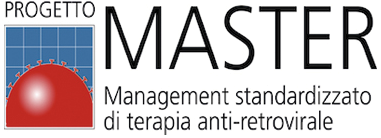BjörnCorleis et al.
Efficacy of an unmodified bivalent mRNA vaccine against SARS-CoV-2 variants in female small animal models
Nature, February 2023; doi.org/10.1038/s41467-023-36110-1
Abstract
Combining optimized spike (S) protein-encoding mRNA vaccines to target multiple SARS-CoV-2 variants could improve control of the COVID-19 pandemic. We compare monovalent and bivalent mRNA vaccines encoding B.1.351 (Beta) and/or B.1.617.2 (Delta) SARS-CoV-2 S-protein in a transgenic mouse and a Wistar rat model. The blended low-dose bivalent mRNA vaccine contains half the mRNA of each respective monovalent vaccine, but induces comparable neutralizing antibody titres, enrichment of lung-resident memory CD8+ T cells, antigen-specific CD4+ and CD8+ responses, and protects transgenic female mice from SARS-CoV-2 lethality. The bivalent mRNA vaccine significantly reduces viral replication in both Beta- and Delta-challenged mice. Sera from bivalent mRNA vaccine immunized female Wistar rats also contain neutralizing antibodies against the B.1.1.529 (Omicron BA.1 and BA.5) variants. These data suggest that low-dose and fit-for-purpose multivalent mRNA vaccines encoding distinct S-proteins are feasible approaches for extending the coverage of vaccines for emerging and co-circulating SARS-CoV-2 variants.
E.J. Emanuel et al.
What Covid Has Taught the World about Ethics
NEJM, October 2022; doi/full/10.1056/NEJMp2210173
Abstract
The Covid pandemic has posed substantial challenges to societies and health systems globally. Many of these challenges have been technical, such as the development of effective vaccines and therapies.
Living in an Age of Pandemics—From COVID-19 to Monkeypox, Polio, and Disease X
JAMA Health Forum, September 2022; doi:10.1001/jamahealthforum.2022.4062
The Lancet Commission on lessons for the future from the COVID-19 pandemic
Lancet, September2022; doi: 10.1016/S0140-6736(22)01585-9
The Lancet Infectious Diseases
Designing infectious disease programmes for the future
Lancet Infect Dis, September 2022; doi: 10.1016/S1473-3099(22)00532-1
Abstract
On July 29, WHO published a new resource for designing public health responses that address HIV, viral hepatitis, and sexually transmitted infections (STIs) among key populations: the Consolidated guidelines on HIV, viral hepatitis and STI prevention, diagnosis, treatment and care for key populations. These populations, according to WHO, must be prioritised for prevention, testing, treatment, and funding in order to reach global targets for diagnosis, treatment, and eradication.
Edited by M. Schuster, P. Duclos
WHO Recommendations Regarding Vaccine Hesitancy
Vaccine, 2015: Volume 33, Issue 34, Pages 4155-4218;
doi.org/10.1016/j.vaccine.2015.04.0340264-410X
This Special Issue includes many of the products, conclusions, and recommendations endorsed by SAGE based on the Working Group’s progress, including:
(1) the definition of vaccine hesitancy and delineation of its components and potential determinants;
(2) an account of attempts to develop and pilot indicators to measure the scale and character of hesitancy in order to inform the development of strategies and policies and measure the effectiveness of interventions;
(3) suggested steps for adapting the Guide to Tailoring Immunization Programmes (WHO EURO) into a more widely applicable diagnostic resource for generating behavioral insights and identifying the determinants of vaccine hesitancy among specific subgroups in particular contexts anywhere in the world;
(4) an examination of social and commercial marketing applications with consideration of their potential to contribute to interventions to address vaccine hesitancy;
(5) systematic reviews of past strategies to address vaccine hesitancy; and (6) a brief synopsis of four lessons from the field of health communication that are applicable to efforts to address vaccine
hesitancy.
B. Formenti et al.
The impact of COVID-19 on communicable and non-communicable diseases in Africa: a narrative review
Infezioni in Medicina, 2022; doi: 10.53854/liim-3001-4
Abstract
The global pandemic of coronavirus disease 2019 (COVID-19) has disproportionately impacted global human health, economy, and security. Because of weaker health-care systems, existing comorbidities burden (HIV, malaria, tuberculosis, and non-communicable conditions), and poor socioeconomic determinants, initial predictive models had forecast a disastrous impact of COVID-19 in Africa in terms of transmission, severity, and deaths. Nonetheless, current epidemiological data seem not to have matched expectations, showing lower SARS-CoV-2 infection and fatality rates compared to Europe, the Americas and Asia. However, only few studies were conducted in low- and middle-income African settings where high poverty and limited access to health services worsen underlying health conditions, including endemic chronic infectious diseases such as HIV and tuberculosis. Furthermore, limited, and heterogeneous research was conducted to evaluate the indirect impact of the pandemic on general health services and on major diseases across African countries. International mitigation measures, such as resource reallocation, lockdowns, social restrictions, and fear from the population have had multi-sectoral impacts on various aspects of everyday life, that shaped the general health response. Despite the vast heterogeneity of data across African countries, available evidence suggests that the COVID-19 pandemic has severely impacted the control and prevention programs, the diagnosis capacity and the adherence to treatment of major infectious diseases (HIV, TB, and Malaria) - including neglected diseases - and non-communicable diseases. Future research and efforts are essential to deeply assess the medium- and long-term impact of the pandemic, and to implement tailored interventions to mitigate the standstill on decades of improvement on public health programs.


